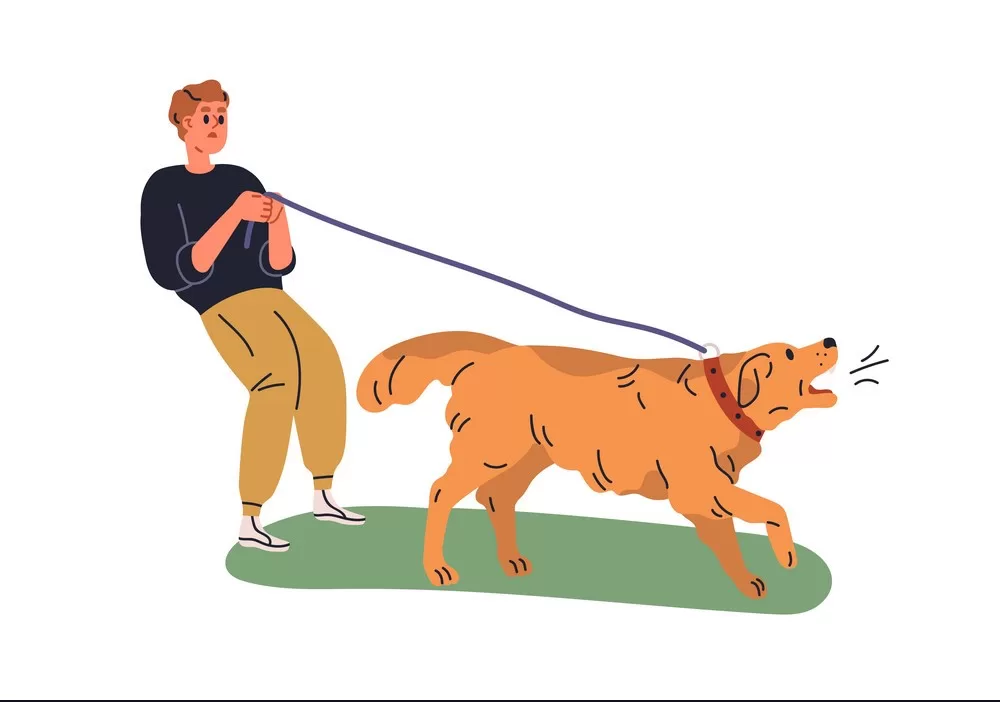Aggression is a significant word for anyone, but it becomes fatal for voiceless beings, especially for dogs when tagged as aggressive. Being a passionate dog lover and working for their welfare, I have encountered social media posts that have massively promoted dog aggression myths over certain incidents worldwide in the past few weeks. Have we ever given thought to the reasons for such circumstances? This article will explore 10 common dog aggression myths that will help clarify misconceptions to some extent.
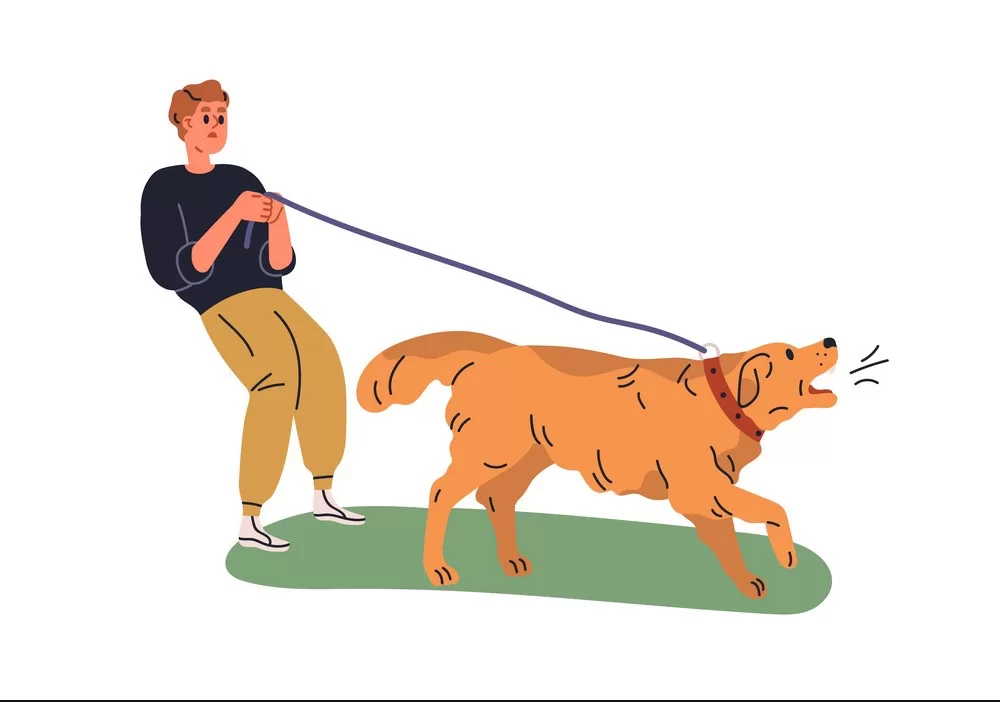
What is dog Aggression?
In our busy lives, we hardly consider the reasons behind anything, but understanding dog aggression is essential as it can lead to a healthy or miserable life for both. Understanding why do dogs become aggressive is critical for dealing with and treating this behavior. Dog aggression can be caused by disease, fear, possessiveness, a display of dominance, or dissatisfaction. Recognizing aggressive behaviors such as growling, snarling, or biting is critical since these behaviors can escalate gradually. If a dog becomes violent abruptly, it could be due to pain or sickness.

Fear, frequently triggered by past trauma or poor socialization, can lead to aggressiveness. Possession can lead to conflict, whether as resource guarding or territorial guarding. Some dogs may exhibit dominance-related aggressiveness, but this is uncommon. When dogs are restricted and deprived of the opportunity to reach a desired goal, resentment or redirected aggression can emerge. It is critical to rule out any potential health risks.

Dog Aggression Myths
Many myths exist about aggressive dogs, but all these myths need to be busted as our society is engulfed with hatred daily toward the voiceless.
Myth 1: All Dogs Are Naturally Aggressive
It’s a popular fallacy that all dogs are innately aggressive. However, aggression is not a trait that all dogs have. A mix of heredity and nurture influence dog behavior. While some breeds of dogs may have a genetic tendency to specific characteristics, including aggression, this does not guarantee that every animal of that breed will be aggressive. A dog’s temperament is influenced by genetics, but its upbringing and surroundings are equally essential. A well-socialized and well-trained dog is less likely to be aggressive toward humans or other animals. Many dog breeds exemplify this temperament variation. Varieties like the Golden Retriever are noted for their kind and gentle attitude, but types like the Chihuahua may be more assertive.
Also Read: Can steroids cause Pancreatitis in dogs? Know 7 Important Things.

Myth 2: Dog Aggression Comes Out of the Blue
The belief that dog aggression comes “out of the blue” is a mistake that often leads to misunderstandings and sometimes dangerous situations. Long before turning to violent behavior, dogs are usually adept at communicating their feelings and displeasure through non-aggressive cues. These indicators include yawning, averted eye contact, and nervously licking their lips.
The important thing is to pay attention to and respond to these early warning indicators. Failure to notice and address these cues can lead to an aggressive situation. Dog owners and handlers must learn about animal body language and behavior. This understanding enables people to comprehend their dog’s emotional condition, detect possible contributing factors, and take appropriate anti-aggression measures.

When a dog appears to have “suddenly” attacked, it’s usually because early indicators of concern or discomfort were ignored or misconstrued. Owners can resolve possible confrontations by paying extra attention to their dog’s body language. They can also get insights about their pet’s behavior, which can be crucial in establishing a harmonious connection.

Also Read: How to Detect Mammary Cancer in Dogs: 10 Signs
Myth 3# Dominance Causes Aggression in Dogs.
The current understanding of canine behavior refutes the common idea that most dog aggressiveness is rooted in dominance. This concept was inspired by observations of captive wolves and their hierarchical interactions. However, it has now been debunked. Social standing has little to no bearing on aggression toward humans or other behavioral problems in companion dogs.
Fear or anxiety is the fundamental reason for aggressive behavior in dogs against people. When dogs bark, growl, or bite, they usually respond to anything frightening or uncomfortable, such as meeting a stranger, clipping their nails, or taking a valued possession away. Teaching the dog to feel safe is an effective treatment for aggression.

Confrontational and dominance-based training tactics, such as leash punishments and alpha rolls, intensify the dog’s fear and worsen the aggression problem. To effectively manage aggression concerns, a modern understanding of canine behavior emphasizes the significance of compassionate and positive reinforcement-based training.
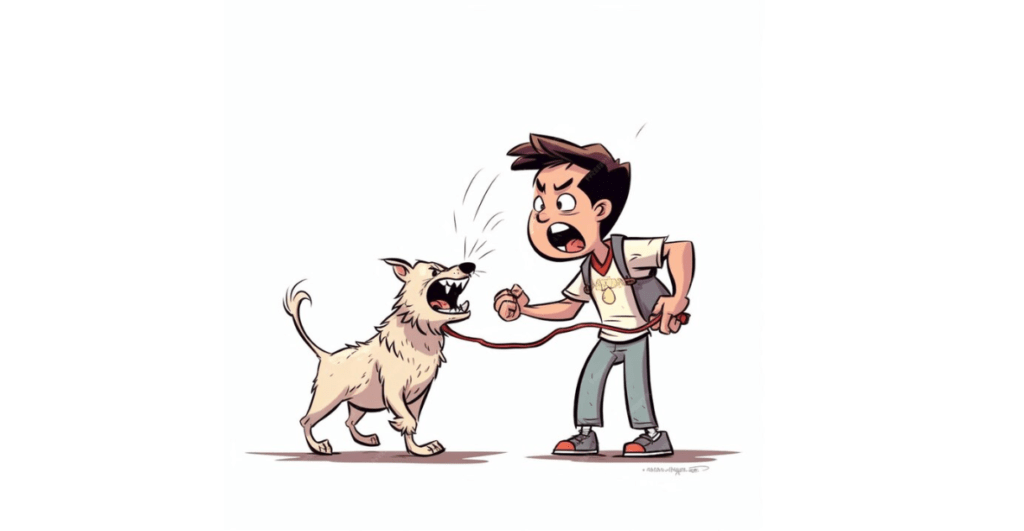
Myth#4: Only Punishment could tame an aggressive dog
The assumption that punishment is the only way to restrain an aggressive dog is unproductive and potentially damaging. This fallacy arises from a punitive approach to dog training in which aggression is viewed as an aberration in behavior that can be corrected via dominance and fear-based approaches. However, the modern understanding of dog behavior and training methods contradicts this view.
Using punishment to deal with hostility can have some negative outcomes. It can intensify the dog’s fear and anxiety, leading to aggressive behavior. Physical corrections or severe verbal reprimands, for example, can destroy the trust and bond between the dog and its owner, resulting in a more insecure and unpredictable pet.
Also Read: How to Ease Halloween Anxiety in Dogs: 9 Important Considerations
Furthermore, violence frequently has underlying causes such as fear, worry, or physical concerns that punishment does not address. Positive reinforcement, desensitization, counterconditioning, and professional assistance from veterinarians or licensed dog behaviorists are all part of an effective treatment plan for aggression.
As a result, the idea that punishment is the only way to tame an aggressive dog is outdated and ineffective. Instead of resorting to punitive measures that might affect the dog’s physical and emotional well-being, modern dog training promotes compassionate, evidence-based approaches focusing on recognizing and dealing with the root causes of aggression.

Myth 5# Aggressive dogs require additional obedience training
A widespread myth is that dogs with aggression issues may be resolved only through increased obedience training. While obedience training strengthens the owner-dog relationship and gives structure, it does not treat aggressive behavior directly. Aggression stems from an emotional problem, not a lack of instruction or obedience.
Even though many aggressive dogs are well-trained and adept in obedience commands, their antagonism continues. This is because violence is rooted in emotions such as fear, anxiety, or territorial drives, which obedience training cannot alleviate.
This maximizes the value of obedience training; it has various advantages. However, dog owners must understand that registering their aggressive dog in a conventional obedience class does not address the underlying issue.
This maximizes the value of obedience training; it has various advantages. However, dog owners must understand that putting their aggressive dog in conventional obedience training would most likely not address the underlying issue. Seeking the help of a veterinary behaviorist for a thorough evaluation and individualized treatment program is a more effective way to deal with aggressiveness issues. Such professionals may delve into the emotional reasons underlying the aggression and offer specific remedies for a safer and more pleasurable connection with the dog.

Myth#6 Neutering is the Only Way to Control Dog Aggression
The prevalent but incorrect belief is that neutering is the ultimate cure for treating or preventing canine aggression. While testosterone can potentially affect certain types of aggression, studies have shown that neutering does not substantially impact most aggression in dogs except in select instances of dog-to-dog hostility, especially in males.
Neutering provides several health and behavioral benefits, including eliminating the risk of testicular cancer, reducing the likelihood of prostate difficulties, and reducing impulses to urinate mark or roam in search of mates. These are all excellent reasons to think about neutering a male dog.
However, it is critical to dispel the myth that neutering is a surefire way to solve aggression issues, as this is not always true. Aggression in dogs is complex and impacted by heredity, upbringing, and socialization. While neutering may positively influence some behaviors, dealing with an attack requires a more thorough strategy, including specialized training, changing behavior patterns, and identifying and controlling the underlying root causes of hostility.
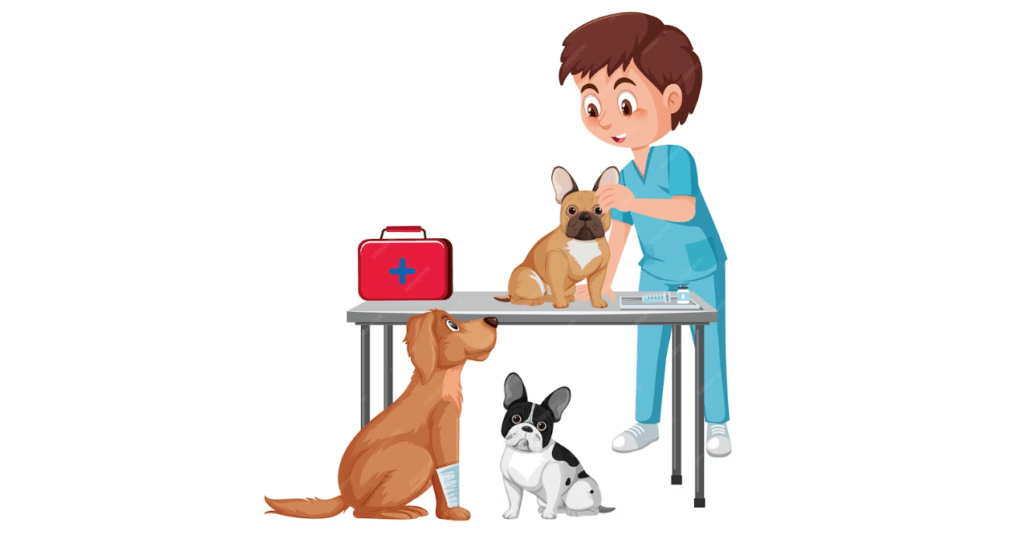
Myth#7 Ethenisation Could Solve the Problem
A common yet mistaken idea in dealing with dog aggression is that euthanasia is the only solution. While extreme examples of violence are upsetting and pose safety concerns, euthanasia should not be the normal reaction. When all other options have been exhausted, and the dog's conduct constitutes an imminent threat to human or animal safety, euthanasia should be considered a last resort.
Aggression difficulties in dogs are frequently complex and varied, with various underlying causes such as fear, anxiety, or territorial tendencies. Addressing these challenges necessitates a multifaceted strategy that may include professional training, behavior modification, and identifying and addressing the underlying reasons for hostility.
Furthermore, many dogs with aggressiveness issues can be rehabilitated and lead happy lives with responsible owners who offer proper training and care. Only after a complete review by a certified veterinary behaviorist or professional can euthanasia be considered, and even then, only after careful consideration of all alternatives that may be available.

Myths # 8 Aggressive Dogs Will Always Be Aggressive
The myth that once a dog exhibits hostility, it will remain unpleasant is false. Aggressive dog behavior can be altered and improved with the appropriate attitude and dedicated efforts from responsible owners. This is why:
The underlying causes of violence might range from fear and anxiety to possessiveness or territorial tendencies. Understanding the root cause of the triggers is critical for properly resolving the behavior.
Consistent training and management are critical components of aggressiveness management. Certified dog behavioral economists can provide significant insights and methods adapted to the unique dog and situation.
Management entails maintaining a safe atmosphere, employing instruments such as muzzles or leashes when necessary, and avoiding circumstances that provoke violence.
Desensitization and counterconditioning, for example, can help change the dog's behavior to cues and progressively diminish aggressive tendencies.
While certain dogs may require continual management and watchful training, aggressive dogs can modify their behavior and become safer and more dependable companions with the appropriate attitude and commitment from their owners.
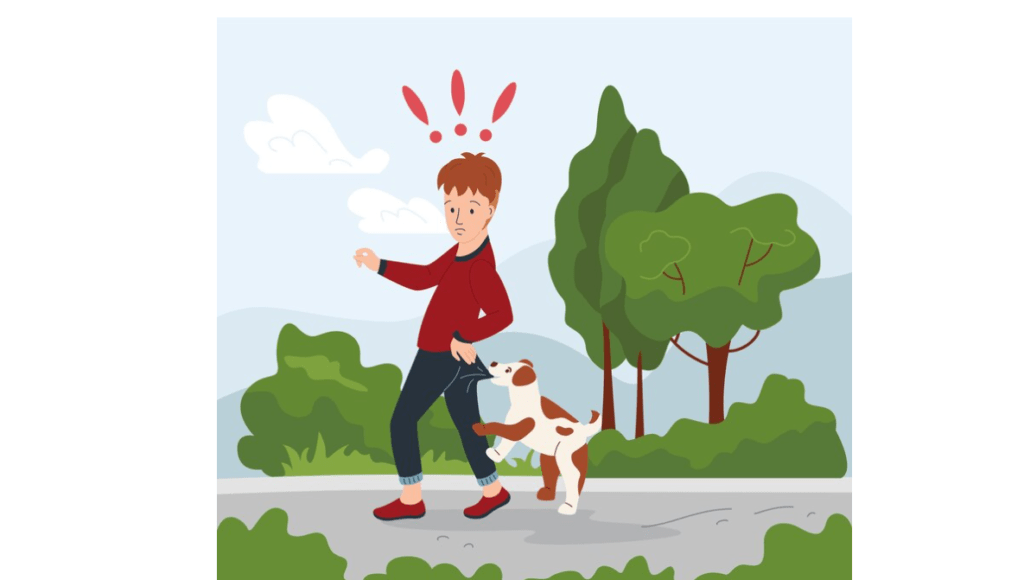
Myths# 9: All Dogs Are Naturally Aggressive
The popular belief that all dogs are naturally aggressive is incorrect. Aggression is not a universal characteristic among dogs. Recognizing the roles that genetics and upbringing play in a dog's temperament is necessary for comprehension.
Heredity can influence a dog's propensity for various behaviors, including aggression. Some breeds may have a hereditary predisposition for protective or assertive traits, but this does not imply that every dog of that breed will be aggressive. Furthermore, genetics do not dictate a dog's behavior.
Second, a dog's upbringing and environment greatly impact its temperament. A well-socialized and well-trained dog, regardless of breed or genetic background, is less likely to exhibit hostility against humans or other animals.
To illustrate, different dog breeds have a wide range of temperaments. Types such as the Golden Retriever are recognized for their kind and gentle attitude, but types such as the German Shepherd may be more protective. These instances demonstrate that breed prejudices do not apply generally, and individual temperament varies greatly among dogs.
Finally, recognizing the influences of heredity and environment on a dog's temperament disproved the misconception that all dogs are naturally aggressive. It is critical to realize that breed does not solely dictate behavior. Responsible ownership, socialization, and training are crucial in molding a dog's propensity toward aggression or non-aggression.

Myth # 10: Aggressive Dogs Can't Be Around Children
The idea that violent dogs and children cannot coexist must be carefully considered. While there are real worries, it is critical to remember that fierce dogs may be managed with children if proper safeguards are taken.
To begin, it is critical to understand the potential hazards. Aggressive behavior in dogs can be dangerous to children, resulting in bites or injuries. As a result, the safety of both children and pets should be prioritized.
To overcome this issue, careful supervision is essential. Never leave a child alone with a vicious dog. Educating youngsters about proper dog behavior, such as not approaching them when feeding or disturbing them while resting, can lessen the danger of sparking aggressive behaviors.
In addition, dog owners must seek professional assistance to address their dog's hostility. Many aggressive dogs can learn to coexist peacefully with children with adequate training, behavior modification, and management tactics.

Final Thoughts
There are many reasons to be conclusive towards dogs being reactive to certain situations and circumstances and tag it as Aggression, but it is important to understand empathetically "why?". Dogs are being killed and tortured because humans are not ready to listen to their side of the story. This article is solely devoted to decoding the myths that made the lives of the voiceless miserable for so long. It is quite evident that the situation will change if we are ready to change our mindset toward them.
What is the most common type of dog aggression?
Fear-based aggressiveness is the most common type of dog aggression. When dogs feel threatened or anxious, they may exhibit aggression, which is frequently a defensive response to perceived danger or discomfort. In an attempt to protect themselves, this aggression can emerge as snarling, snapping, or biting.
How do you read an aggressive dog?
Body language clues such as tight posture, direct eye contact, growling, barking, snarling, and exposed teeth are used to read an aggressive dog. Understanding these indications enables you to assess the dog's emotional condition, anticipate probable aggressive triggers, and take appropriate steps to guarantee the dog's and humans' safety.
Can you trust a dog after it bites?
After a dog bites, trust can be regained via proper training, socialization, professional supervision, love, empathy, and patience. However, prudence and safety must be prioritized, especially if the dog has displayed hostility. It takes time, patience, and an all-encompassing awareness of the dog's triggers and behavior to rebuild trust.

